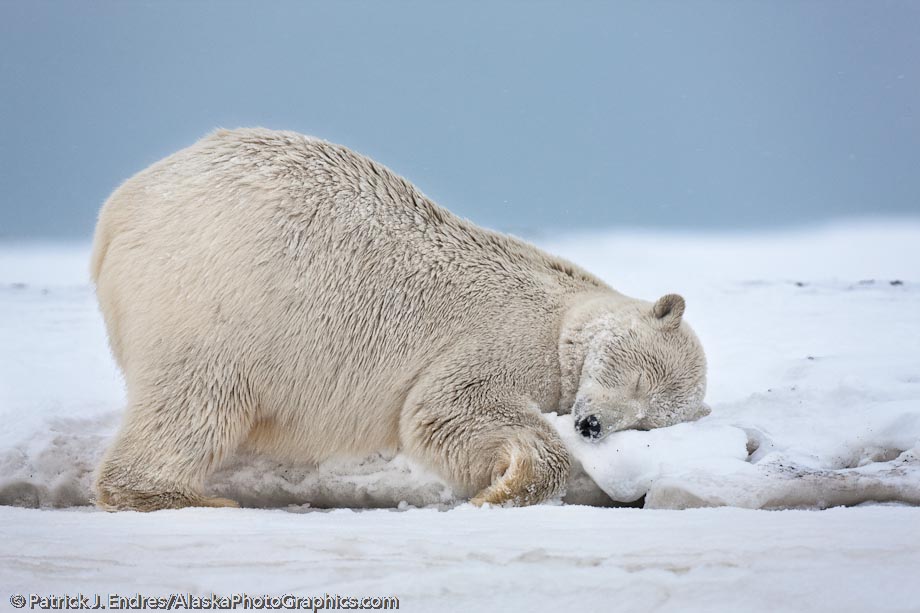
Female polar bear rubs in the snow on an island in the Beaufort Sea, Arctic Alaska. Canon 1Ds Mark III, 500mm f/4L, 1/320 sec @ f/6.3, ISO 800.
In my observations and photography in nature, I consider the polar bear to be one of the most amazing animals, exhibiting tremendous adaptation which has made them fit for survival in a harsh climate. They are generally a solitary animal, with a tremendous range of up to 1000 miles. Much of their life on the sea ice is in darkness, or at least the sun-less days of winter, lit perhaps by moonlight. Photographing them in the wild, in Alaska, is possible in a few locations. However, many variables play their part in one’s attempt at successfully achieving this goal. In October, bears are anxiously waiting for the ice to form on the Beaufort Sea, and when this happens, they leave the shores and head for the frozen ocean to hunt for their favorite and fat-rich food supply of seal.
Low levels of light, unstable, moving platforms, wintry conditions, hand holding long lenses (to name a few challenges), made this photo encounter a multifaceted one. The temperature was in the 20’s, not real cold, but after a few hours holding the hand above the heart, touching metal in various forms, my fingers tend to loose sensitivity. While it is easily endurable, I cant change focal points as quickly as usual, and this becomes a problem since it forces composition to a focus point dot. In general, I find it difficult to both hand hold and manual focus the 500, so I’m linked to the auto-focus system. (On a side note, I tested Canon’s new 7D on this trip, and I did like the new autofocus features available on that camera. I’m still sold on the files generated by the 1Ds and the 5D however and I’ll talk about my thoughts on the 7D camera in a later post)
I took the frame hand held with the 500mm f/4 IS–a lens of incredible quality and versatility. ISO 800 was a common shooting setting–thanks to the beautiful files generated by Canon’s 1Ds Mark III. With any more movement, one really needs 1/500 or 1/640 of second, which then puts your aperture wide open. Additionally, when shooting at such a high ISO, one needs to make sure the exposure is accurate, since boosting it in post production can create noise and grain.
This female bear spent a considerable time rolling in the snow, cleaning her fur which had taken on a dark tone from the sand and dirt prior to the fresh snowfall. It was a great photo session with the bears, and everyone on our photo tour got impressive images. I’ll post a few more of the bears in following entries as they are a favorite subject to many.






